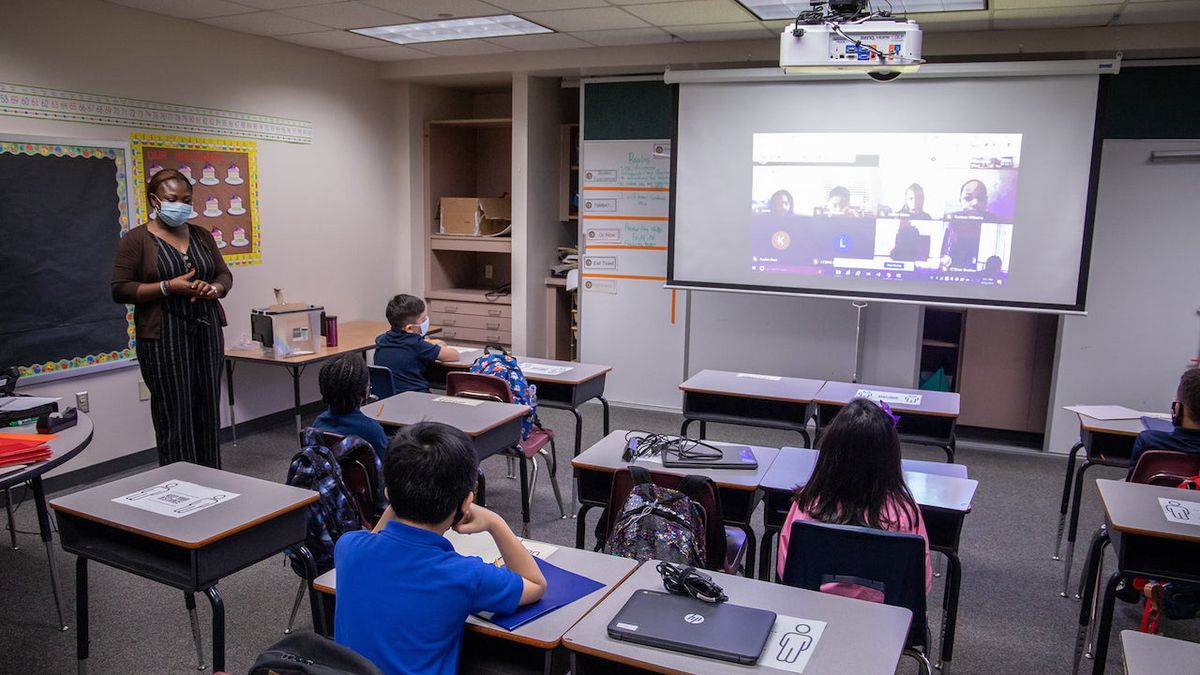Spring Independent School District in Houston is undergoing strategic change with an ambitious five-year action plan. Key imperatives of the plan are focused on reaching every child, driving excellence in every school, developing a culture of high performance from teachers and staff, and engaging stakeholders in the community. Accomplishing those goals required a hard look at the organization’s operational excellence and implementing technology to improve classroom instruction and outcomes. The district decided now was the time to replace the costly lamp-based projectors in every classroom with ultra-bright, long-lasting laser projectors.
“Our projectors were 12 years old. It was difficult to find bulbs anymore because they're so old,” said Ben Leung, director of Technical Support services at Spring ISD. “Even when we replaced the bulbs, the lamps were dim or worse, dead on arrival. We were spending upward of about $40,000 a year on them and the quality wasn’t even consistent.”
Related: The Technology Manager's Guide to Projectors and Screens
Traditional lamp-based projectors require the school to maintain a supply of bulbs, have staff available to replace them, plus a way to properly dispose of them, which adds associated costs. Many projector lamps contain chemicals such as mercury gas, which can be hazardous. The EPA recommends recycling bulbs, but some states and local jurisdictions actually require it, which can incur additional fees.
A lamp typically lasts a maximum of 5,000 hours, but the average is closer to 2,000 hours. Even with a new lamp, the brightness can be all over the map. It’s also a fact that lamp brightness slowly deteriorates as the projector is used, which means they’re quickly burning through that brightness with daily classroom use. Schools are having to replace lamps faster, which can quickly drive up costs and maintenance.
Another problem of lamp-based projectors is having to regularly clean filters. Projector filters are designed to filter out dust and other debris. Left unchecked, dust can build up on the lens and the engine, causing a poor-quality picture and even shorten the projector lifespan. Maintenance staff has to spend time climbing up a ladder repeatedly to clean or replace the filters. With 42 schools and close to 1,900 projectors installed throughout Spring ISD, that was a lot of labor and time to keep classroom technology operating smoothly.
To solve this problem, the district’s IT staff decided to update with laser-based projectors. They brought in laser projectors from multiple vendors. Their governance committee, which is made up of teachers in the district, were able to test and compare each of the projectors over an intense nine-month period.
“In the side-by-side projector comparison, BenQ’s LW Series BlueCore laser projectors came out on top in terms of functionality, brightness, and performance,” Leung said. “The teachers liked them the best.”
The school selected 4,000-lumen WXGA LW720 and the short-throw 3,600-lumen WXGA (1280x800) LW820ST from BenQ’s classroom BlueCore laser projectors. With the projectors, schools no longer have to worry about keeping a supply of lamps on hand, theft, or properly disposing of them. In addition to the lower cost of ownership they improve classroom instruction with brightness and clarity that every student can see. The projectors employ BenQ’s dual color wheel systems for improved color performance by increasing color ratios and purity of RGBY color, greatly enhancing color saturation and at the same lumen output of lamp-based projectors for better viewing experiences. Furthermore, the projectors provide teachers with wireless presentation capabilities from their laptops. This allows them to collaborate with students and present without being chained to their desk or podium.
“Our teachers loved the projectors’ brightness and color accuracy,” Leung said. “When they compared it to the other laser projectors, that’s what they noticed most, and now they have freedom.”
To ensure the lifespan of the projector as well as protect the laser brightness and color quality, the projectors are designed with BenQ’s DustGuard technology. Dust, when hit with the intensity of the laser, can melt and harden inside the laser bank and eventually short out the projector. DustGuard prevents dust from gathering inside, which can be extremely damaging to laser projectors, and eliminates the use of ineffective dust filters or the labor involved to clean them. The technology includes hermetically sealed laser modules to protect the laser bank. The design has passed the dust chamber test standard for the international dustproof rating of IP5X.
“For the past 12 years, we went into every classroom, climbed a ladder, blew out dust and changed the filter and bulb of every projector,” Leung said. “That’s a lot of maintenance and costs we no longer have to worry about for years to come. If that wasn’t enough, we also have observed an almost 95 percent decrease in help desk tickets. BenQ BlueCore laser projectors have lowered our total cost of ownership so significantly it’s become our new district standard.”










